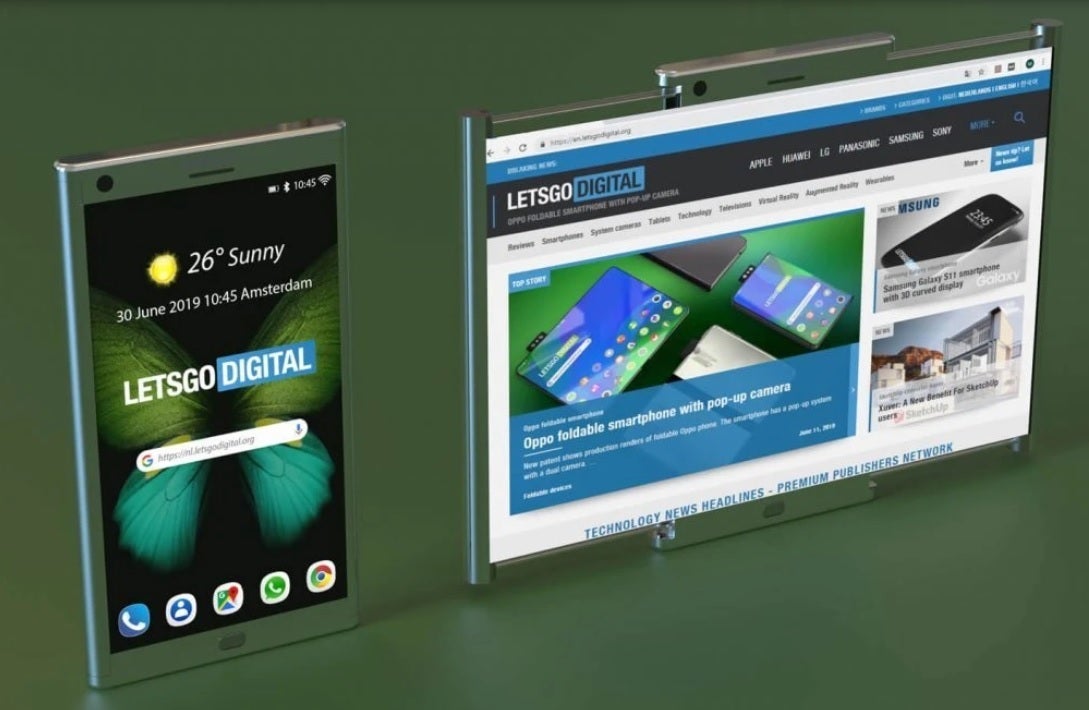Here's why one analyst doesn't expect Samsung to produce rollable or slidable phones

When it comes to foldables, Samsung dominates the market with a huge gap between the South Korean manufacturer and second place Huawei. Besides its big lead in foldables, Samsung has been collecting patents for rollable or stretchable phones that have a display that can stretch out to become tablet-sized and retract to a size associated with a smartphone. Considering the success that Sammy has had in foldbles, you would think that rollables or stretchables would be the next frontier for the company.
But one analyst says that this is not the case. UBI Research CEO and chief analyst Yi Choong-hoon told The Korean Herald that "The market for foldable phones overlaps with that for slidable phones. It will be difficult for slidable phones to create its own market." As a result, the analyst says, "Samsung seems uninterested in slidable phones and will focus resources on foldable phones for some time."
Besides Huawei, other Chinese manufacturers producing foldables include Oppo, Vivo, Xiaomi, and Lenovo (if you include the Motorola Razr). The analyst says that these companies will have trouble catching up to the Galaxy Z Fold and Galaxy Z Flip models. "Samsung Display has secured an unrivaled competitiveness, especially on related patents and production know-how. It won’t be easy for Chinese rivals to compete head-on," Yi said.
As a result, we could see slidable phones developed and released by the phone manufacturers headquartered in China as a way to compete with Samsung's foldables. Last month, during the Lenovo Tech World event, Motorola displayed a rollable concept phone that expands from 4-inches to 6.5-inches. "Chinese smartphone makers may seek to launch slidable phones in an attempt to differentiate themselves from Samsung," Yi said, "But the market potential seems limited."
As a result, we could see slidable phones developed and released by the phone manufacturers headquartered in China as a way to compete with Samsung's foldables. Last month, during the Lenovo Tech World event, Motorola displayed a rollable concept phone that expands from 4-inches to 6.5-inches. "Chinese smartphone makers may seek to launch slidable phones in an attempt to differentiate themselves from Samsung," Yi said, "But the market potential seems limited."

LetsGo Digital render of a Samsung rollable based on a patent filing
Yi points out that while foldable displays have been improved over the last few years, slidable displays have more "cons" than "pros." Displays for slidable phones are covered with a polyimide film for protection, but this film can have an effect on the surface quality of the display. And the analyst also notes that "For consumers who are familiar with folding phones like a book, sliding the screen may feel more complicated. For the same reason, the slidable display is unlikely to be used for laptops. But for tablet PCs, the entry barrier seems lower than other devices."
Remember when a foldable phone sounded like science fiction? The shortcomings could be ironed out and we could eventually see such devices hit the market. After all, just before it withdrew from the handset business, LG was on the cusp of releasing the LG Rollable. Last September, a video review of a nearly finished unit was posted on YouTube. The screen would have expanded from 6.8-inches to 7.4-inches.










Things that are NOT allowed: